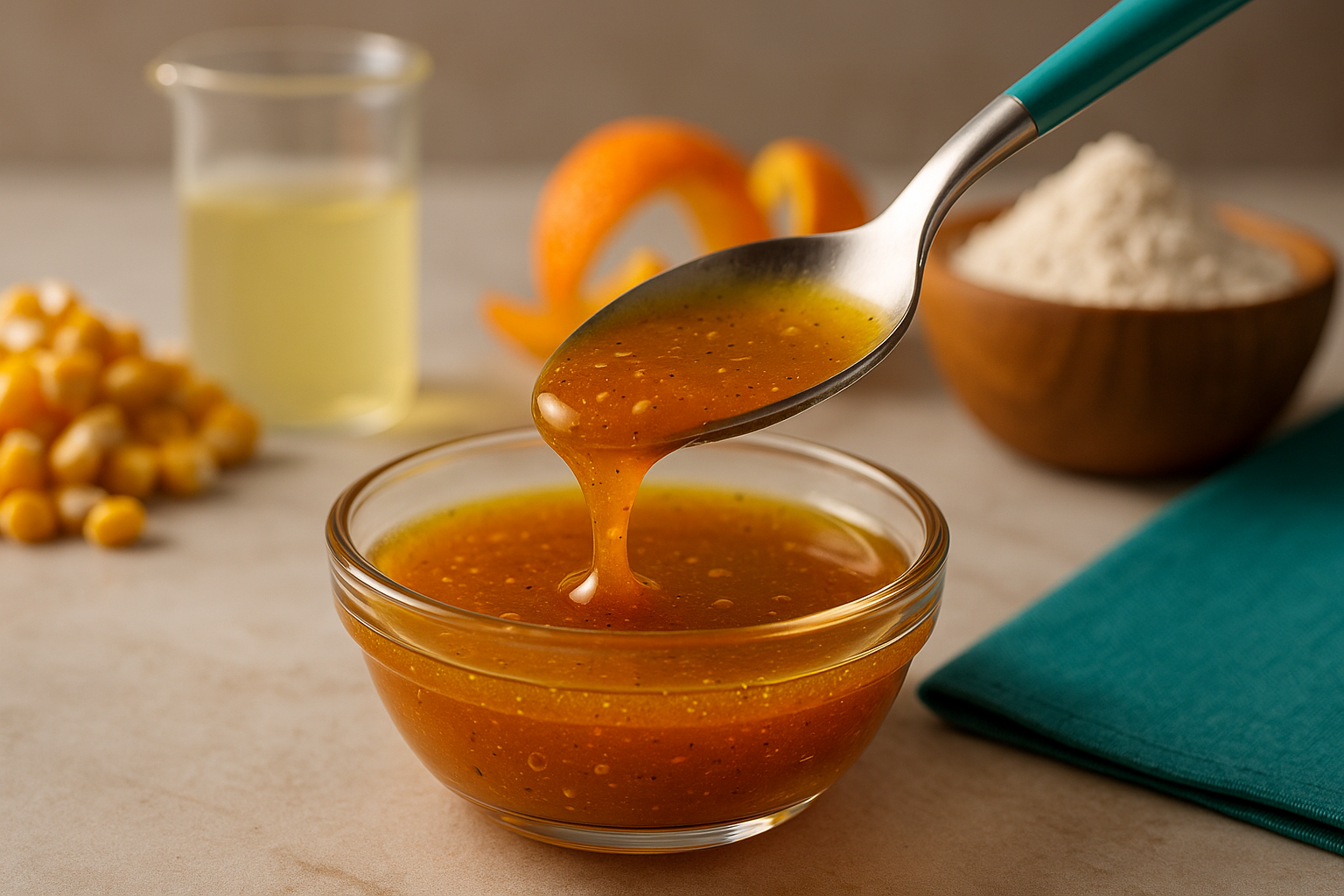
Calcium Chloride in Food: Benefits, Applications, and Safety
SUBSCRIBE TO OUR BLOG
Promotions, new products, and recipes.
What You Will Learn
-
What calcium chloride is and how it’s made, including its chemical structure, production process, and food-grade forms.
-
How calcium chloride is used in the food industry, from firming canned fruits to balancing minerals in beverages and aiding cheese making.
-
Its benefits for texture, preservation, and sodium reduction, and how it helps extend shelf life and maintain product quality.
-
Innovative uses in molecular gastronomy, such as spherification techniques in modern cuisine.
-
Regulatory approvals, safety profile, and potential health considerations recognized by the FDA, EFSA, and other authorities.
Calcium chloride in food is a versatile ingredient widely used across the food industry for its beneficial properties. This type of salt, known chemically as CaCl2, serves various purposes, from improving texture to enhancing shelf life. Found in many food categories, it plays a vital role in maintaining product quality and ensuring food safety.
Whether used as a firming agent in canned fruits or for creating innovative textures in molecular gastronomy, calcium chloride is an essential food additive. Recognized by global regulatory authorities like the U.S. Food and Drug Administration and the European Union, it is generally regarded as safe for human consumption when used in appropriate amounts.
Understanding Calcium Chloride in Food
What is Calcium Chloride?
Calcium chloride, chemically represented as CaCl2, is a type of salt widely used in various industries, including food production. Its versatility and effectiveness make it a valuable ingredient in many food-related applications. This compound is available in different forms, including anhydrous calcium chloride and food-grade calcium chloride, which are specifically designed for safe use in food products.
Derived from a reaction between hydrochloric acid and calcium carbonate, calcium chloride boasts a simple yet robust chemical structure. This reaction produces calcium chloride and releases carbon dioxide as a byproduct. Its ability to bind water molecules contributes to its widespread use in applications requiring moisture control, firmness, and preservation. Calcium chloride is also a common substitute for sodium chloride (table salt) in some recipes due to its lower sodium content and its ability to deliver a similar salty taste without the associated health concerns of excess sodium.
In the food industry, calcium chloride is categorized as a food additive and is generally recognized as safe by major health and regulatory authorities. Its functionality extends beyond its chemical properties, making it an indispensable ingredient in numerous food categories.
How is it Used in Food Production?
Calcium chloride is highly valued in food production for its ability to maintain texture, enhance firmness, and improve the overall quality of food products. It is commonly used in canned fruits to help retain their structure during processing and storage. By strengthening the cell wall of fruits, calcium chloride prevents them from becoming overly soft, ensuring they remain visually appealing and palatable.
In the dairy industry, calcium chloride plays a crucial role in cheese making. It helps balance calcium levels in milk, which is essential for proper curd formation. Without sufficient calcium content, curds may fail to set correctly, leading to inferior product quality. Similarly, in meat products, calcium chloride is employed to improve texture and water retention, ensuring a high-quality end product that meets consumer expectations.
Beyond solid foods, calcium chloride is also used in beverages such as sports drinks and fruit juices. In these applications, it acts as a stabilizing agent, enhancing the consistency and mouthfeel of the liquid. Additionally, it can be used to adjust the mineral content of beverages like bottled water, improving taste and nutritional value. Calcium chloride’s ability to dissolve easily in water and other liquids makes it an ideal ingredient for such applications.
Key Applications of Calcium Chloride in Food
Preservation and Texture Enhancement
Calcium chloride is a key player in food preservation and texture enhancement. It is often added to pickling solutions as a pickle crisp, helping to maintain the crunchiness of pickled vegetables. This firming agent ensures that pickles retain their desired texture even after prolonged storage. Similarly, calcium chloride is used to preserve food at room temperature or during freezing, preventing texture degradation caused by ice crystal formation. Its ability to lower the freezing point of water further aids in maintaining food quality during cold storage.
Another significant benefit of calcium chloride is its ability to reduce sodium content in processed foods. By replacing sodium chloride with calcium chloride, manufacturers can achieve a comparable salty taste while addressing growing concerns about the health risks associated with high sodium intake. This substitution not only enhances the nutritional profile of food products but also aligns with modern dietary trends focused on reducing sodium levels.
Innovative Uses in Molecular Gastronomy
In the realm of molecular gastronomy, calcium chloride has opened up new possibilities for culinary creativity. One of its most popular uses is in spherification, a technique where liquids are transformed into gel-like spheres that resemble caviar. When combined with sodium alginate, calcium chloride helps create these unique textures, which are often used to elevate high-end culinary presentations. This innovative application showcases the adaptability of calcium chloride in both traditional and modern food science.
Molecular gastronomy has embraced calcium chloride not just for its functional properties but also for its ability to enhance product quality in experimental and fine dining settings. By enabling chefs to manipulate textures and create visually stunning dishes, calcium chloride has cemented its place as a valuable tool in the culinary arts. Its role in food standards and advanced food science underscores its importance in shaping the future of international food innovation.
Regulatory Approvals and Safety of Calcium Chloride
Safety Assessments by Authorities
Calcium chloride is widely recognized as a safe and effective food additive, with approvals from major regulatory authorities worldwide. The U.S. Food and Drug Administration (FDA) classifies calcium chloride as generally recognized as safe (GRAS), meaning it can be used in food production without posing risks to human health when consumed in appropriate amounts. This approval is based on rigorous safety assessments and decades of use in the food industry.
Similarly, the European Union and organizations like the European Food Safety Authority (EFSA) have evaluated the safety of calcium chloride. These institutions ensure compliance with strict food standards and regulations, further validating its use in food production. The Food and Agriculture Organization (FAO) also supports the application of calcium chloride as a safe food additive in various food categories. These international endorsements highlight its importance in maintaining food safety and product quality globally.
Additionally, the National Institutes of Health (NIH) recognizes calcium chloride as a valuable compound in food science and preservation. Its inclusion in food-grade applications is supported by scientific evidence, confirming its safety when used within recommended limits. Manufacturers are required to follow clear guidelines for its use, ensuring that calcium chloride meets food safety standards and consumer expectations.
Potential Health Risks and Adverse Effects
While calcium chloride is generally safe for human consumption, it is essential to use it within prescribed limits to avoid potential health risks. Consuming small amounts of calcium chloride in food is not harmful and is even beneficial in certain applications, such as providing essential calcium ions to the diet. However, excessive intake or high doses can lead to adverse effects.
One potential health risk associated with calcium chloride is its impact on heart rate when consumed in very large quantities. High doses can disrupt the body's electrolyte balance, potentially leading to irregularities in heart function. For this reason, manufacturers carefully regulate the amount of calcium chloride used in food production to prevent such risks.
Rarely, calcium chloride may cause skin irritation or contact dermatitis if handled improperly, especially in its concentrated or industrial forms. Consumers concerned about allergies or specific health conditions should consult a healthcare provider for advice. Additionally, individuals with pre-existing health problems or sensitivities should exercise caution when consuming foods containing calcium chloride, even in small amounts.
To ensure transparency, manufacturers provide detailed ingredient lists and adhere to safety data sheet protocols when using calcium chloride in food products. These measures help inform consumers about the presence of calcium chloride and mitigate potential side effects. Overall, its safety profile remains strong, with adverse effects being exceedingly rare when used appropriately.
Broader Applications of Calcium Chloride
Uses Beyond Food Production
Calcium chloride is not limited to food production; it has a wide range of applications in other industries. One prominent use is in dust control, where calcium chloride is applied to roads and construction sites to minimize dust particles. Its hygroscopic properties, which allow it to absorb moisture from the air, make it highly effective in this application. Similarly, calcium chloride is a common component in ice melt products, where it lowers the freezing point of water and helps clear snow and ice from roads and walkways during winter.
In the realm of water treatment, calcium chloride plays a vital role in maintaining water quality. It is used in fish tank maintenance to balance calcium levels, ensuring a healthy environment for aquatic life. Additionally, it is employed in drinking water treatment processes to adjust mineral content and improve taste. Bottled water manufacturers often use calcium chloride to enhance the flavor profile and nutritional value of their products.
Healthcare is another sector that benefits from the versatile properties of calcium chloride. It is a key ingredient in calcium supplements, which are widely used to address calcium deficiencies. The compound is also utilized in medical treatments, such as calcium gluconate injections, to manage specific health conditions. Its applications in healthcare further underscore its importance as a safe and effective compound.
Importance in International and Regional Markets
Calcium chloride's role extends to international and regional markets, where it contributes to food safety, quality control, and innovation. In North America, for instance, the food industry relies heavily on calcium chloride to improve product quality and extend shelf life. Its use in dairy products, canned fruits, and meat products ensures consistency and consumer satisfaction.
In the United Kingdom and across the European Union, calcium chloride is an essential component of food production, adhering to strict regulatory standards. The European food industry values its ability to enhance texture and preserve freshness while maintaining compliance with food safety guidelines. Similarly, the compound is a crucial ingredient in global markets, supporting the production of high-quality international food exports.
As the demand for healthier and more sustainable food options grows, calcium chloride remains at the forefront of innovation. Its ability to reduce sodium content, improve calcium levels, and support advancements in molecular gastronomy makes it an indispensable resource for modern food science. Additionally, its role in quality control ensures that food products meet the expectations of both consumers and regulatory authorities worldwide.
How Calcium Chloride Enhances Product Quality
Improving Texture and Preservation
Calcium chloride plays a pivotal role in improving the texture and preservation of various food products, making it a key ingredient in the food industry. In dairy products, such as cheese, it ensures proper curd formation by balancing calcium levels in the milk. This process is critical for achieving the desired texture and consistency in high-quality cheese, highlighting its importance in cheese making. Similarly, in meat products, calcium chloride helps maintain moisture and enhances texture, ensuring the end product meets rigorous quality control standards.
For canned and fresh fruits, calcium chloride acts as a firming agent, strengthening the cell wall to retain structure and appearance. This is particularly important for products like canned peaches or fresh-cut apples, which can easily lose their firmness during processing and storage. By maintaining these qualities, calcium chloride not only improves the visual appeal of these products but also extends their shelf life, which is essential for consumer satisfaction and reducing food waste.
In beverages, calcium chloride is widely used to enhance product quality. For instance, bottled water often contains calcium chloride to adjust the mineral content, improving both taste and nutritional value. Beer brewing also benefits from calcium chloride, as it aids in balancing water chemistry, which is crucial for flavor development and fermentation. Whether in liquid form or as part of a calcium chloride solution, this versatile compound ensures that beverages meet high-quality standards.
Role in Molecular and Food Science
The role of calcium chloride extends beyond traditional food production into the innovative fields of molecular gastronomy and food science. By enabling spherification techniques through its interaction with sodium alginate, calcium chloride allows chefs and food scientists to create unique textures and presentations. This process has gained popularity in high-end culinary environments, showcasing the artistic and scientific potential of food-grade calcium chloride in modern cuisine.
In food science, calcium chloride contributes to advancements in food standards and preservation methods. It is used to improve calcium content in various foods, addressing nutritional concerns and supporting healthier dietary options. Additionally, its ability to reduce sodium content while providing a similar salty taste offers a valuable solution to the growing health issues associated with high sodium intake, such as hypertension and cardiovascular disease. These applications demonstrate how calcium chloride supports innovation and health-focused trends in the global food industry.
Important Insights About Calcium Chloride in Food
Calcium chloride is a cornerstone of food preservation, safety, and innovation, proving its value in both traditional and modern culinary applications. Its ability to enhance texture, improve calcium levels, and reduce sodium content makes it an indispensable ingredient in the food industry. From canned fruits to molecular gastronomy, calcium chloride continues to shape the way we produce and enjoy food.
Approved by regulatory authorities such as the U.S. Food and Drug Administration and the European Food Safety Authority, calcium chloride ensures food safety and product quality. Its versatility and adherence to strict safety assessments make it a trusted choice for manufacturers and consumers alike, solidifying its place as a vital component of modern food science.
10 FAQs – Calcium Chloride in Food
1. What is calcium chloride?
Calcium chloride (CaCl₂) is a type of salt used in food production for texture improvement, preservation, and mineral balancing.
2. Is calcium chloride safe to eat?
Yes. It’s classified as Generally Recognized as Safe (GRAS) by the U.S. FDA and approved by the EFSA when used in recommended amounts.
3. How is calcium chloride made?
It’s typically produced by reacting hydrochloric acid with calcium carbonate, resulting in calcium chloride and carbon dioxide.
4. What foods contain calcium chloride?
Common examples include canned fruits, pickles, cheese, bottled water, sports drinks, and some meat products.
5. Why is calcium chloride used in canned fruits?
It strengthens fruit cell walls, helping maintain firmness and preventing mushiness during processing and storage.
6. How does calcium chloride help in cheese making?
It restores calcium levels in milk, ensuring proper curd formation and improving cheese texture.
7. Where can Calcium Chloride be Purchased
Calcium chloride can be purchase through Cape Crystal Brands.
8. What is spherification and how does calcium chloride play a role?
Spherification is a molecular gastronomy technique that creates gel-like spheres; calcium chloride reacts with sodium alginate to form the gel.
9. Are there any side effects from calcium chloride?
It’s safe in food amounts, but excessive consumption could cause electrolyte imbalance; rare skin irritation may occur from concentrated forms.
10. Is calcium chloride found outside of food applications?
Yes. It’s used in ice melt products, dust control, water treatment, and certain healthcare and pharmaceutical applications.

|
About the Author Ed is the founder of Cape Crystal Brands, editor of the Beginner’s Guide to Hydrocolloids, and a passionate advocate for making food science accessible to all. Discover premium ingredients, expert resources, and free formulation tools at capecrystalbrands.com/tools. — Ed |
Enjoyed this post? Subscribe to The Crystal Scoop
Food-science tips, ingredient know-how, and recipes. No spam—unsubscribe anytime.
- Choosing a selection results in a full page refresh.



